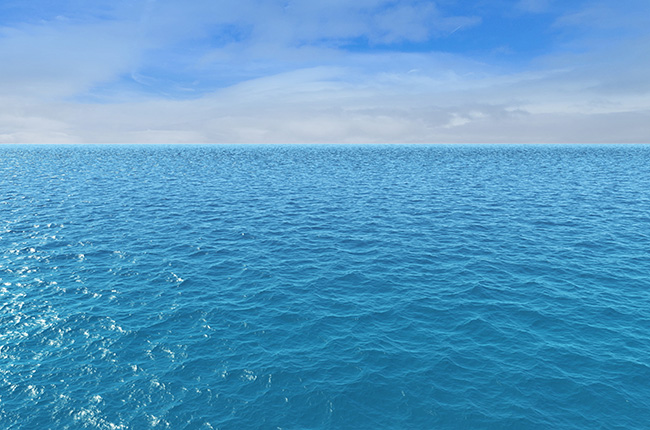Iron particles coming from hydrothermal vents along volcanic mountain ridges deep in the ocean persist for more than 2,500 miles across the Pacific, according to a study led by a Texas A&M University researcher.
Jessica Fitzsimmons, Assistant Professor in the Department of Oceanography at Texas A&M, and colleagues from Rutgers University, the University of South Carolina, the University of Minnesota, and the Woods Hole Oceanographic Institute have had their work published in the current issue of Nature Geoscience.
The team examined a 2,500-mile-long, deep hydrothermal plume of water in the Central Pacific Ocean, specifically studying the iron transformations as the heated water mixes with cold, deep Pacific water. Iron is important in the ocean because iron concentrations are generally low, and microscopic organisms called phytoplankton – a key part of the marine food chain – need iron to survive. Phytoplankton serve as food for the fish that feed people all over the world.
“No one ever knew how far these metal particles, which are 7,000 to 8,000 feet deep in the ocean, could travel away from their source vents,” explains Fitzsimmons. “So we couldn’t understand what effect they had on the overall chemistry of the world’s oceans.” By measuring hundreds of seawater samples along the track of the plume, the team found that iron particles persisted for thousands of miles.
New Oceanography Degree Prepares Students To Tackle Challenges Facing The World’s Oceans
The biggest surprise was that through exchange between hydrothermal iron particles and the iron dissolved in seawater, the slowly sinking particles caused the dissolved iron to sink by 1,000 feet while it was carried west.
“This iron exchange, facilitated by the natural organic compounds to which iron is bound, controls where the eventually upwelled to the surface ocean. This is critical, since it is this supply of iron to phytoplankton at the surface that affects carbon dioxide sequestration from the atmosphere.”
Fitzsimmons’ team’s conclusions suggest that the supply of iron by hydrothermal vents and subsequent transformations when mixing with seawater are important for scientists to understand in order to predict how the oceans could help to reduce the carbon dioxide levels emitted by fossil fuels that are leading to climate change today.
The project was funded by the National Science Foundation, Chemical Oceanography, and was associated with the International GEOTRACES Program.
For more about the study, go to http://www.geotraces.org.
###
Contact: Jessica Fitzsimmons at (979) 845-5137 or jessfitz@tamu.edu or Robyn Blackmon, communications manager, College of Geosciences, at (979) 845-6324 or robynblackmon@tamu.edu or Keith Randall, News & Information Services, at (979) 845-4644or keith-randall@tamu.edu
About Research at Texas A&M University: As one of the world’s leading research institutions, Texas A&M is at the forefront in making significant contributions to scholarship and discovery, including that of science and technology. Research conducted at Texas A&M represented annual expenditures of more than $892.7 million in fiscal year 2016. Texas A&M ranked in the top 20 of the National Science Foundation’s Higher Education Research and Development survey (2015), based on expenditures of more than $866.6 million in fiscal year 2015. Texas A&M’s research creates new knowledge that provides basic, fundamental and applied contributions resulting, in many cases, in economic benefits to the state, nation and world. To learn more, visit http://research.tamu.edu.
For more news about Texas A&M University, see https://today.tamu.edu/.
Follow us on Twitter at https://twitter.com/TAMU




